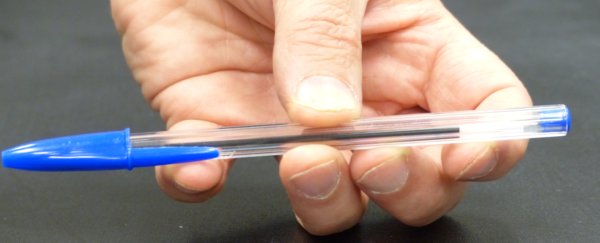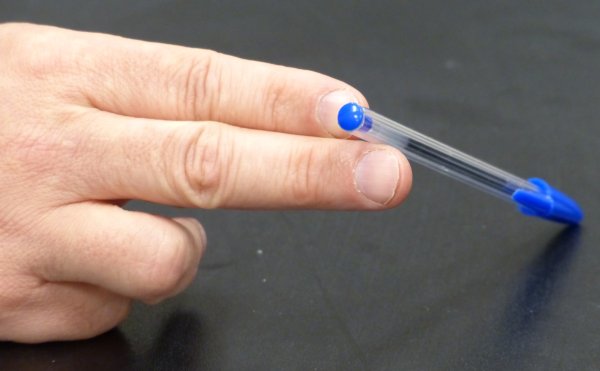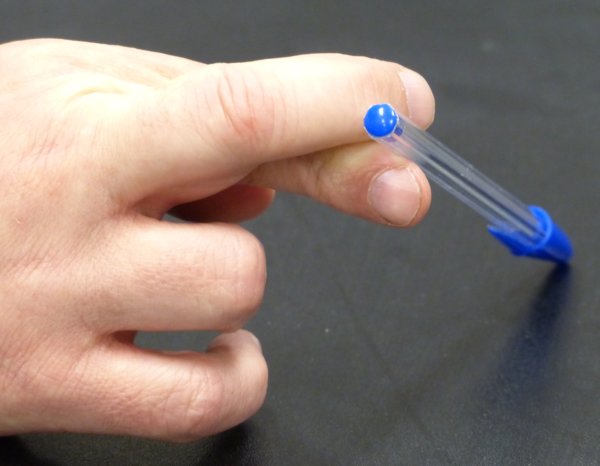Aristotle was a keen observer and is the first to record two very interesting sensory phenomena, one of which will be described here. This phenomenon is an illusion of touch. This illusion still bears his name (Benedetti, 1985).
The question to be discussed here is how do we know if we are touching one or more than one object? When you touch something with your hand, it touches several parts of your hand. Look at the photograph below.

A person is holding a pen, but it touches the tips of each finger. Still, the pen will be felt as a single pen and not five separate objects. Aristotle's illusion gives some insight into this question. Follow the instructions on the next page.
What you will need:
• A pen or pencil
• Two people, preferably
• Your hand (and the hand of your partner, if you are using one)
This illusion works best if you try it on a partner and your partner tries it on you. These instructions will be written assuming you have two people performing this task, but you can try it just your hand.
First, try the non-illusory condition.
Have your partner put out her hand and hold her two first two fingers out and together, like in the
photograph below. It helps if he either closes his eyes or looks away. After he are ready,
place your pen or pencil to touch the insides where the two finger meet as shown in the photograph.
Try to make the pen or pencil touch both fingers at the same time. Ask your partner what they feel.
Clicking on the photograph will show you a larger version of the photograph.

Now, try the illusory condition.
Again, have your partner put out her hand, but this time have her cross her first two fingers.
It still helps if he either closes his eyes or looks away. As before,
place your pen or pencil to touch the insides where the two finger meet as shown in the photograph below.
In this condition, it is even more important to touch both fingers at the same time.
Ask your partner what they feel.

Now switch roles, and have your partner try the illusion on you.
In the first condition, your partner and you should feel one pen or pencil. That makes sense. The oddity is that when your cross your fingers, most of you will feel two touches at the same time. Without going into too much information, which will be covered later in the text, notice what parts of the fingers are touched in each case.
In the first condition, the parts of the skin touched usually face each other. You touched the sides of the fingers that are near each other and often will both be touched when we reach out and grab a single object. When you crossed your fingers, you are touching the outsides of each finger. These sides face away from each other. Usually when they are touched, it is by two different objects. It is worth considering how our nervous system might be organized to take advantage of this fact and represent it in our brain (see Chapter 14).